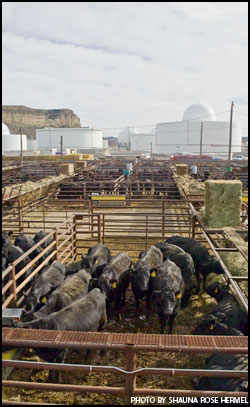 The Impact of Dressing Percent on Cull Cow Marketing
The Impact of Dressing Percent on Cull Cow Marketing
Cull cows that are destined to go to the packinghouse are graded by their fleshiness. The fattest cows are called "Breakers." Moderately fleshed cows are "Boners." Thin cows are called "Leans" or "Lights," depending upon the weight of the cow.
There will be price differences among these four grades. However, within each grade, large variations in price per hundredweight (cwt.) will exist because of differences in dressing percentage.
Cow buyers are particularly aware of the proportion of the purchased live weight that eventually becomes saleable product hanging on the rail. Dressing percentage is (mathematically) the carcass weight divided by the live weight multiplied by 100.
Key factors that affect dressing percentage include gut fill, udder size, mud and manure on the hide, excess leather on the body, and anything else that contributes to the live weight but will not add to the carcass weight.
Most U.S. Department of Agriculture (USDA) Market News reports for cull cows will give price ranges for high, average and low dressing percents for each of the previously mentioned grades. As you study these price reports, note that the differences between high- and low-dressing cows will generally be greater than differences between grades. Many reports will indicate that low-dressing cows will be discounted up to $10 per cwt. compared to high-dressing cows and will be discounted $5 to $6 per cwt. compared to average-dressing cows. These price differences are usually widest for the thinner cow grades (Leans and Lights). See examples from sales at the Oklahoma City National Stockyards: www.ams.usda.gov/mnreports/ko_ls155.txt.
As producers market cull cows, they should be cautious about selling cows with excess fill. The large discounts due to low dressing percent will more than offset any advantage from the added weight.
Comment on this article.





